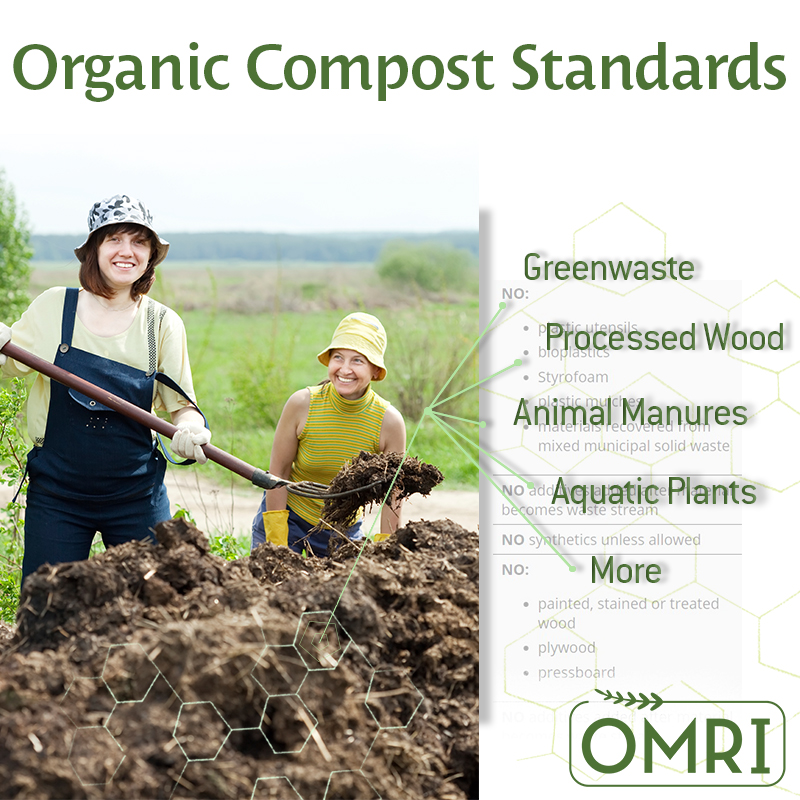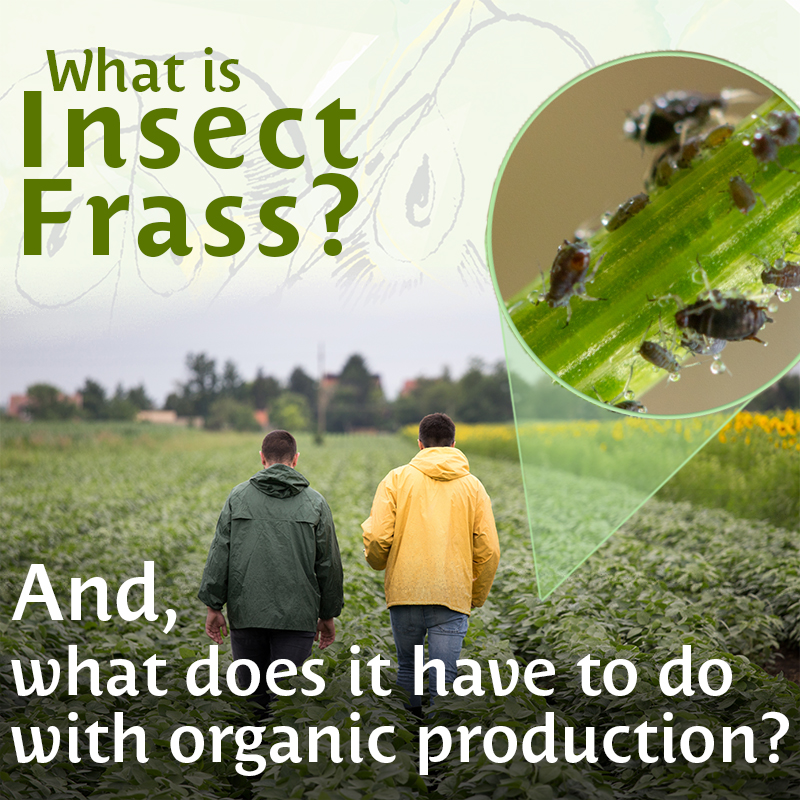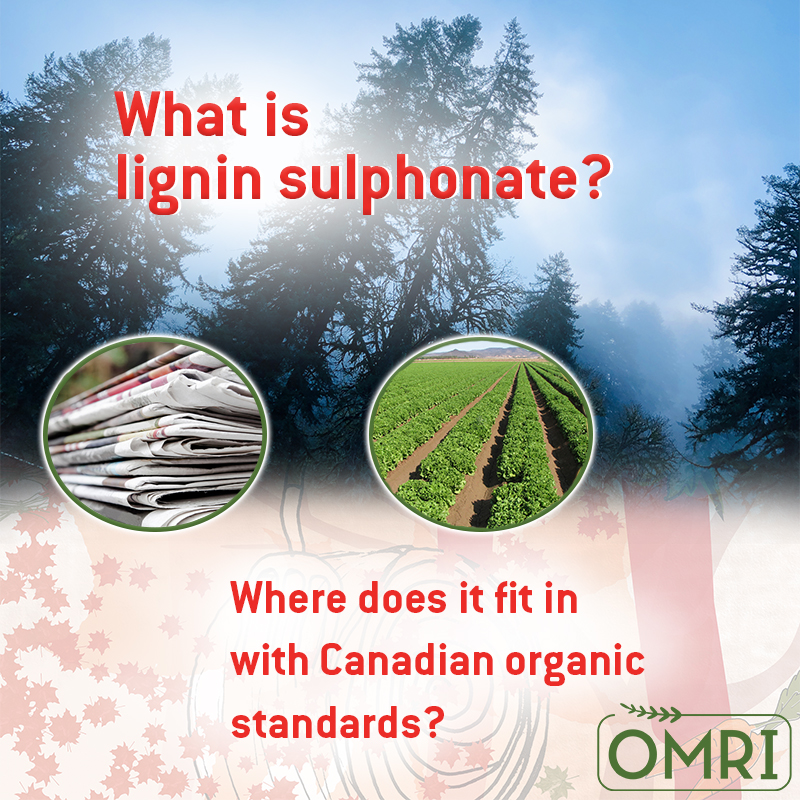
Looking for complete background information on a particular topic? You’ve come to the right place!
Browse OMRI’s articles, or contact us to suggest a topic. Don’t forget that subscribers receive the complete OMRI newsletter with the latest reports, delivered quarterly.
 What standards must compost products meet to be used in organic agriculture?
What standards must compost products meet to be used in organic agriculture?
By Taryn Kennedy
The USDA National Organic Program (NOP) regulations cover on-farm practices such as cultivation, crop rotation, and fertility management. These standards specify what substances can be applied to crops and soil. The NOP publishes guidances that further clarify the standards in relation to a...
by Deder Siedler
Ammonium sulfate, (NH4)₂ SO₄, is an additive occasionally used in both livestock and human foods. While ammonium sulfate is often considered a source of nitrogen, it is also a source of sulfur.
The NOP Rule states that synthetic “Trace minerals, for enrichment or fortification…” (§205.603 (d)(2)) and “Vitamins, for enrichment or fortification…” §205.603 (d)(3)) are Allowed, but only when “FDA approved.”
...What are elemental sulfur and sulfurous acid? How are they allowed for use in organic farming?
By Cesar Cartagena
Sulfur is the fifth most common element on Earth when measured according to mass. “Elemental sulfur” refers to the chemically simple form that is not combined with other elements in compounds (e.g., sulfates, sulfites or sulfur dioxide). Since sulfur is so abundant, the extraction of pure sulfur from volcanic regions was the primary method for production in the United States until the late 20th century....
Is crystalline silica allowed in a limestone product?
By Jarod Rhoades
In the world of rocks, there is perhaps no other mineral with more names than silica. Quartz, jasper, amethyst, chert, flint, citrine, chalcedony, and tridymite are just a sampling of the many silica varieties, and those are just the crystalline structure forms. Silica, also known as silicon dioxide because of its molecular formula (SiO2), is the second most common mineral in the Earth’s crust.
It is quite common to see a reference to...
By Tina Jensen Augustine
Are kairomones considered pheromones, and are they allowed?
The National List at §205.601(f) allows for the use of synthetic pheromones in insect management. These synthetic pheromones are copies of certain natural substances released by organisms as communication signals. “Semiochemical” is the general term used to describe chemicals emitted by an organism that influence the physiology or behavior of other organisms. Pheromones are semiochemicals that influence the physiology or behavior of...
By Jarod Rhoades
In the world of rocks, there is perhaps no other mineral with more names than silica. Quartz, jasper, amethyst, chert, flint, citrine, chalcedony and tridymite are just a sampling of the many varieties of silica that can be found on the Earth’s surface, and those are just the crystalline forms. Silica (known as SiO2 to chemists – silicon dioxide) is the second most common mineral in the crust of the planet.
It is quite common to see a reference to crystalline silica on the Safety Data Sheet (SDS) for a mined...
by Brice Crayne
Organic farming often depends on some smelly products, such as manure and fish emulsion, for several functions such as increasing soil fertility, reducing municipal wastes and supporting animal waste management. What is it that makes these materials unappealing to our sense of smell? Ammonia (NH₃) and methane (CH₄) are two of the most common compounds emitted during the microbial breakdown of organic compounds that are instinctually unappealing to humans. Imagine a barn with 10,000 laying hens…that’s a lot of poop!...
I see AAFCO referenced in the OMRI Generic Materials List© (GML), but how exactly does OMRI use the AAFCO publication in product reviews?
Doug Currier
The Association of American Feed Control Official’s (AAFCO) annual publication is referenced throughout OMRI’s Generic Materials List (GML) and is a cornerstone resource when reviewing livestock feed additives and supplements for use in organic production. From the definitions it provides to the list of approved livestock feed additives, the AAFCO publication is an...
 What is insect frass and how does OMRI review it?
What is insect frass and how does OMRI review it?
By Tara Sistrunk
Insect frass is debris or excrement from larvae and mature insects. Similar to the production of worm castings, frass is produced by introducing larvae or mature insects to feedstocks such as food scraps or grains, and then allowing them to grow. Larvae or mature insects are then separated from their excrement, which is...
 When is lignin sulfonate allowed in organic production in Canada?
When is lignin sulfonate allowed in organic production in Canada?
By Everett Codd
Lignin sulphonates, also referred to as lignosulphonates or lignin sulphonic salts, are by-products of paper production. Wood, the base material from which most paper is made, is primarily composed of two types of materials: carbohydrates (such as...








